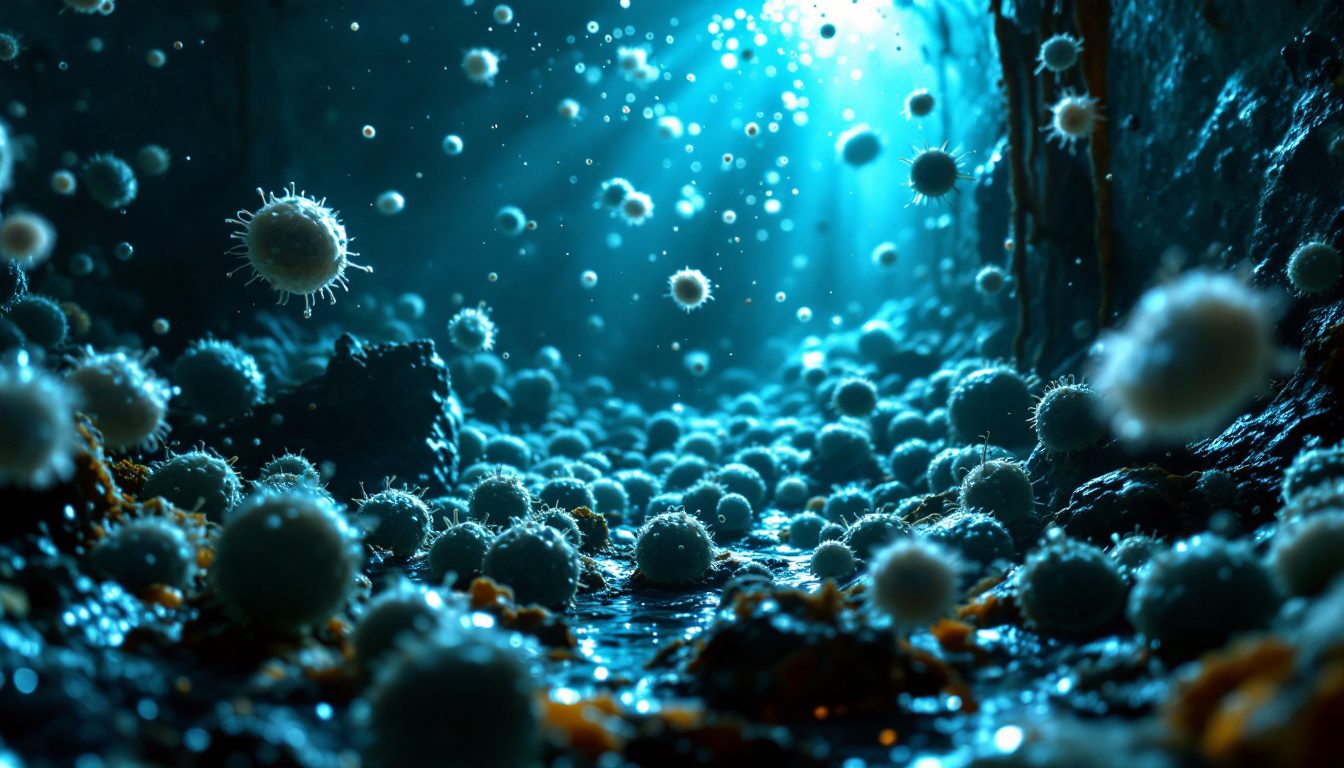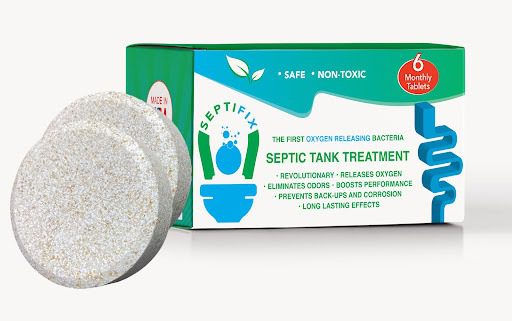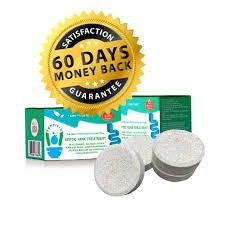Learn how Aerobic Bacteria in Septic Tanks break down waste, reduce odors, and improve treatment.
Get easy oxygen tips to keep your system running well.
Most people know that compost turns kitchen scraps into black, crumbly goodness for the garden.
But if you’re curious about sustainable living, you might wonder how your aerobic bacteria septic tank fits into the story.
Maintaining a healthy septic system isn’t just about protecting pipes—it’s about harnessing natural processes like those in composting or vermicomposting right in your backyard.
Aerobic bacteria in septic tanks play a crucial role in waste breakdown by using oxygen to break down waste quickly, promoting odor reduction and helping your septic system run efficiently.
These microbes work much like those in a compost tumbler, keeping maintenance simple and supporting the environmental protection values many compost enthusiasts embrace.
If you care about turning waste into something beneficial for your soil or the planet, understanding how aerobic bacteria function in your septic system will give you greater control and confidence on your composting journey.
Key Takeaways
- A healthy septic system relies on aerobic bacteria to speed up waste breakdown and improve odor reduction.
- Composting principles in septic tanks closely resemble those used in backyard composting and vermicomposting.
- Learning about your septic tank helps you compost, recycle, and live a greener, more environmentally protective lifestyle at home.
What Are Aerobic Bacteria and How Do They Work in Septic Tanks?
If the idea of bacteria keeping your septic tank healthy seems unusual, you’re not alone.
Yet, these microscopic workers play a crucial role in making your home more eco-friendly and maintenance easier.
Understanding aerobic bacteria is not just for microbiologists—it’s practical insight that helps your septic system (and even your garden) function better.
What Are Aerobic Bacteria?
Aerobic bacteria are tiny organisms that require oxygen to live and thrive. In a septic tank, they help break down waste efficiently—similar to how turning and aerating a compost tumbler transforms kitchen scraps into rich compost.
These bacteria break down food scraps, paper, and other organic materials in the tank into water, carbon dioxide, and small amounts of harmless sludge.
Picture a pile of leaves: if sealed in a wet, airtight bag, it becomes smelly and slimy—this is the anaerobic (low-oxygen) process.

But if the pile is spread out with plenty of air, it decomposes faster and smells fresh and earthy.
This is aerobic action at work, the same process that happens inside your septic tank when oxygen is available.
Key points about aerobic bacteria:
- They need oxygen to break down waste into safer substances
- They work faster than anaerobic bacteria, which do not require oxygen
- They help reduce foul odors by efficiently decomposing smell-causing materials
If you’ve ever tried backyard composting, you already understand the basics.
Aerobic bacteria in a compost tumbler depend on oxygen, moisture, and nutrients to break down kitchen scraps.
Your septic system mirrors this natural process.
Septifix: Find Out More!
How Do They Work in Septic Tanks?
Now, let’s explore the activity within your septic tank. After flushing, waste flows into the tank and begins to separate.
Heavier solids settle at the bottom while liquids form a middle layer.
This is where aerobic bacteria thrive—especially in septic systems designed with aeration or equipped with an aerobic treatment unit that supplies oxygen.
Here’s the breakdown:
- Oxygen is introduced into the tank. Certain septic systems use pumps or an aerobic treatment unit to circulate air, ensuring oxygen mixes with the waste.
- Aerobic bacteria break down waste. With oxygen present, these bacteria rapidly digest organic matter, converting it to water, carbon dioxide, and simple sludge.
- Odors are minimized. Because aerobic bacteria efficiently process the waste, they reduce the unpleasant rotten-egg smell common in septic systems lacking oxygen.
- Cleaner water results. Treated water is often of higher quality, benefiting the environment and sometimes suitable for garden irrigation.
Think of aerobic bacteria as the “composters” inside your septic system.
Like a well-aerated compost pile or vermicomposting setup that stays fresh due to continuous airflow, an effective septic system encourages these bacteria to work quickly.
For more detailed insights into aerobic versus anaerobic bacteria in septic tanks, check out this informative breakdown of septic system bacteria.
Why Aerobic Bacteria Matter in Your Septic System
Aerobic bacteria do more than just keep your septic system running smoothly—they make your home and yard healthier spots.
Here’s why:
- They break down waste faster: Like turning a compost tumbler, aeration stimulates bacteria activity, speeding up waste decomposition.
- They reduce odors: Strong aerobic action means fresher surroundings without unpleasant smells.
- They improve water quality: Efficient processing lowers the risk of soil and groundwater contamination.
- They decrease the need for pumping: Effective breakdown reduces solid buildup, meaning less frequent tank emptying.
If you enjoy composting or vermicomposting, think of your septic system as another green project working quietly beneath your feet to keep your environment clean.
For those curious about how bacteria process waste in tanks, this wastewater treatment guide explains their vital role in detail.
Quick Guide: Aerobic vs. Anaerobic Bacteria in Septic Tanks
| Feature | Aerobic bacteria | Anaerobic bacteria |
|---|---|---|
| Oxygen required | Yes | No |
| Breakdown speed | Fast | Slower |
| Odor control | Good odor control | Poor odor control |
| Typical byproducts | Water, CO2, less sludge | More sludge, smelly gases |
| Compost comparison | A tumbler you turn | A pile left untouched |
Key Takeaways
- Aerobic bacteria in septic tanks rely on oxygen to break down waste quickly and reduce odors.
- Their process parallels the aeration and microbial action in a compost pile or tumbler.
- Healthy aerobic bacteria mean less maintenance, fewer odors, and a cleaner home ecosystem.
- Supporting these microbes with septic-safe products and proper airflow benefits your entire septic system.
- If you’re passionate about composting, your septic tank’s beneficial bacteria are part of the same natural cycle!
If you need guidance on composting or septic system care, Compost Charm’s composting FAQ bot offers instant advice.
You can also explore easy tips for starting composting at home.
For practical advice on boosting bacterial activity, discover why adding bacteria to a septic tank enhances waste breakdown.
Benefits of Aerobic Bacteria in Septic Tanks
If you’re curious about turning home waste into something much friendlier for your garden, an aerobic bacteria septic tank offers a practical, natural solution.
These beneficial microbes in the septic system use oxygen to speed up waste breakdown, making the process cleaner and reducing unpleasant odors.
This approach delivers several advantages for gardeners and composters alike.
Let’s explore how aerobic treatment units link a healthy septic tank system to a thriving, odor-free yard—and even enhance composting results and soil health.
Cleaner Water and Better Odor Control
A well-oxygenated septic tank or aerobic treatment unit resembles a perfectly managed compost tumbler: waste breaks down efficiently, and your garden (and nose) benefits.
When aerobic bacteria flourish, they use oxygen to degrade organic matter much faster than anaerobic bacteria, generating water, carbon dioxide, and minimal harmless sludge.
Why is this important for your home and garden?
- Odor reduction: Aerobic bacteria in the septic system significantly reduce bad smells by transforming foul substances into less offensive by-products. This odor control is similar to how turning compost stops it from emitting a rotten egg smell.
- Cleaner effluent: The water leaving the septic tank is much cleaner effluent, less likely to carry harmful contaminants. This improvement in water quality is especially beneficial if your property uses treated effluent for irrigation, ensuring safer water for the environment and your garden.
- Healthy drain field support: Effluent from aerobic treatment units is gentler on the drain field and surrounding soil, preventing issues like clogging or unhealthy buildup. This supports the long-term sustainability of your septic system.
For a detailed look at these processes, refer to resources on aerobic bacteria and wastewater treatment, which explain how oxygen-rich environments create safer outcomes for landscapes and gardens.
If you’re familiar with compost tumblers, you know oxygen is essential for breaking down materials without unpleasant odors.
Aerobic bacteria in septic tanks perform the same function with household waste, helping you enjoy your outdoor spaces without worrying about smells.
Supporting Healthy Gardens with Septic Effluent
Using compost or vermicomposting teaches the value of moisture and nutrients for plant growth.
Effluent from a well-maintained aerobic septic system continues this cycle by providing water that’s low in organic waste but still nutritionally beneficial.
How does this benefit your garden?
- Consistent moisture: Treated septic effluent helps keep soil hydrated, encouraging seed sprouting and steady plant growth while reducing dry patches—even in warm seasons.
- Nutrient support: While not a substitute for fertilizer, effluent from aerobic bacteria septic tanks offers a mild nutrient boost that complements your compost or vermicompost inputs.
- This helps close the loop between waste and productivity in your home system.
- Eco-friendly garden care: Incorporating both compost and properly treated septic effluent encourages sustainable gardening.
- It minimizes water waste and makes every drop count toward cultivating healthy, vibrant plants.
Low-maintenance septic system care shares many principles with composting—such as ensuring proper airflow and using septic-safe products.
Regular inspections and pumping keep your aerobic treatment unit functioning smoothly, making your septic tank a quiet ally for flourishing tomato, lettuce, or sunflower beds.
To learn more about how aerobic and anaerobic bacteria differ in septic systems and how this impacts effluent quality, check out accessible guides explaining septic bacteria types.
Though septic bacteria work invisibly underground, their positive effects are evident above ground—in healthier plants, fresher garden air, and a home system that supports your composting efforts.
When managed well, your household waste truly nourishes your entire property, from compost to flowerbed.
Key Takeaways
- Aerobic bacteria in septic tanks speed up waste breakdown while delivering effective odor reduction, much like turning a compost tumbler.
- Cleaner effluent produced by aerobic treatment units supports safer irrigation and aligns perfectly with composting and vermicomposting practices.
- Attending to tank airflow and routine maintenance ensures nothing goes to waste, transforming household runoff into healthy soil and thriving plants via your septic system.
- Want tailored advice to match septic system care with your garden or compost goals?
- Try Compost Charm’s Ask A Question tool for step-by-step guidance.
For more composting inspiration, explore 6 Effective Composting Methods to keep your garden and household running smoothly together.
How to Maintain Healthy Aerobic Bacteria in Your Septic Tank
Maintaining a thriving population of aerobic bacteria in your septic tank bacteria is much like caring for your favourite compost pile or vermicomposting bin—regular attention and simple habits create the perfect environment.
Aerobic bacteria rely on oxygen, gentle handling, and the right balance of organic material to efficiently break down organic waste, control sludge, and keep your septic system running smoothly.
With a few proactive choices and routine septic tank maintenance, you can support these beneficial bacteria, keep your aerobic treatment unit in top condition, and apply composting principles you already trust.
Avoiding Harmful Chemicals and Antibiotics
Household products can significantly impact aerobic bacteria in your septic system—some promote their growth, while others act like harmful chemicals disrupting the bacteria population.
Harsh substances such as bleach, strong solvents, and antibacterial soaps target beneficial bacteria indiscriminately, slowing down the vital breakdown of waste.
If you wouldn’t add something to your compost, it’s likely best avoided in your septic tank.
Watch out for these common harmful chemicals to keep your septic system healthy:
- Antibacterial soaps and disinfecting wipes: These kill both harmful and beneficial bacteria.
- Bleach and chlorine-based cleaners: Powerful enough to destroy aerobic bacteria crucial for wastewater treatment.
- Solvent-based drain cleaners: Tough on clogs but damaging to the delicate bacterial balance.
- Unused antibiotics and medications: Flushing these disrupts microbial activity in your septic system.
Switching to safer options is easier than you think. Consider these septic tank maintenance-friendly alternatives:
- Enzyme-based or septic-safe cleaners: Effective yet gentle on aerobic bacteria.
- Baking soda and vinegar: Natural, compost-friendly solutions that align with septic system care.
- Eco-friendly, biodegradable soaps: Free from harmful chemicals and supportive of beneficial bacteria.
For proper waste disposal, bring unused medications to local pharmacy take-back programs or participate in designated disposal events.
This not only preserves your septic tank bacteria but also protects the broader environment—goals shared by composters and gardeners alike.
Before you clean, ask yourself: “Would this harm the microorganisms in my compost tumbler?”
That simple mindset supports healthy microbial life in composting, vermicomposting, and your septic system.
For more beginner-friendly advice, explore the natural synergy between composting and septic care in Compost Charm’s 6 Effective Composting Methods.
Key takeaways:
- Harmful chemicals and antibiotics suppress aerobic bacteria, hindering organic waste breakdown.
- Using septic- and compost-friendly cleaners helps maintain a healthy septic system.
- Best practices from composting also support your septic tank’s aerobic bacteria.
Troubleshooting Common Problems
Even with conscientious septic tank maintenance, you might encounter typical issues like unpleasant odours or slow drainage.
These challenges mirror common compost pile problems—when the system is off balance, some observation and adjustments restore harmony.
Here’s how septic tank problems relate to compost and how you can tackle them:
Septifix: Find Out More!
Septic tank tips with composting comparisons
Bad smells
- Septic tank sign: strong, unpleasant odors around drains or the yard.
- Composting clue: a sour, stinky pile that feels heavy and damp.
- Quick fix: keep good airflow and skip dumping fats, oils, or harsh chemicals.
- A working aeration system and plenty of oxygen help microbes stay active and cut odors.
Slow drainage
- Septic tank sign: sinks and tubs drain slowly, sometimes with gurgling.
- Composting clue: a wet, soggy bin that turns to mush.
- Quick fix: reduce how much waste you send at once, spread out laundry and dish cycles, and track moisture levels.
- If clogs keep coming back, call a professional. That is similar to a compost pile that turns to sludge.
Persistent high solids
- Septic tank sign: rising sludge levels and frequent backups.
- Composting clue: a compacted, unturned pile that starves microbes.
- Quick fix: schedule regular pumping to control sludge.
- Spread waste input more evenly to support bacteria and keep wastewater treatment working well.
If you manage both your septic system and compost units, apply these principles consistently:
- Feed manageable amounts of organic material.
- Maintain clear airflow through your aeration system.
- Monitor moisture and avoid overloading with any one waste type.
A well-maintained septic tank functions much like a balanced compost system—less odor, improved efficiency, and fewer costly problems.
Consistent septic tank maintenance and regular checks are key.
For tailored troubleshooting advice on both composting and septic systems, try Compost Charm’s Ask A Question tool.
To revisit the basics, their guide on Starting Composting at Home is a great resource.
For a clearer understanding of why aerobic bacteria matter in your septic system, check out this overview of the differences between aerobic and anaerobic bacteria in septic systems.
Key takeaways:
- Proper aeration, balanced organic waste input, and avoidance of harmful chemicals resolve most septic tank issues.
- Composting habits and septic tank maintenance complement each other—healthy microbes mean less trouble.
- Routine care keeps both your soil and septic tank in excellent shape, fostering a healthy septic system for years to come.
What are Septifix Tablets?
Conclusion
Aerobic bacteria play a crucial role in speeding up waste breakdown within your septic system, leading to fewer odors and a safer yard for everyone.
When you foster the right environment for these microbes, you not only support effective odor reduction but also contribute to environmental protection and a more sustainable home—whether you’re managing your compost tumbler, trying vermicomposting, or exploring easy recycling methods.
Taking care of both your compost and your septic tank encourages real change, transforming waste into valuable resources for your garden and community.
For detailed advice on various composting techniques, explore the comprehensive guide on effective composting techniques, or ask questions anytime using the Compost Charm Ask A Question tool.
Every small effort brings you closer to a greener, more efficient home through environmental protection.
Thank you for caring about your family, your soil, and the planet.
Key Takeaways
- Aerobic bacteria in your septic tank and septic system promote faster waste breakdown and keep odors under control, enhancing your property’s health.
- Successful composting, vermicomposting, and septic system care all depend on nurturing these beneficial microbes.
- Prioritize regular maintenance and avoid harsh chemicals for the best results across your home systems.
- Compost Charm offers practical tips to make home composting and septic system management simple, effective, and enjoyable.
- Keep exploring new techniques or get expert answers anytime to ensure your eco-projects thrive.
What will you try next in your composting or septic system routine? Share your plans, and happy composting!










